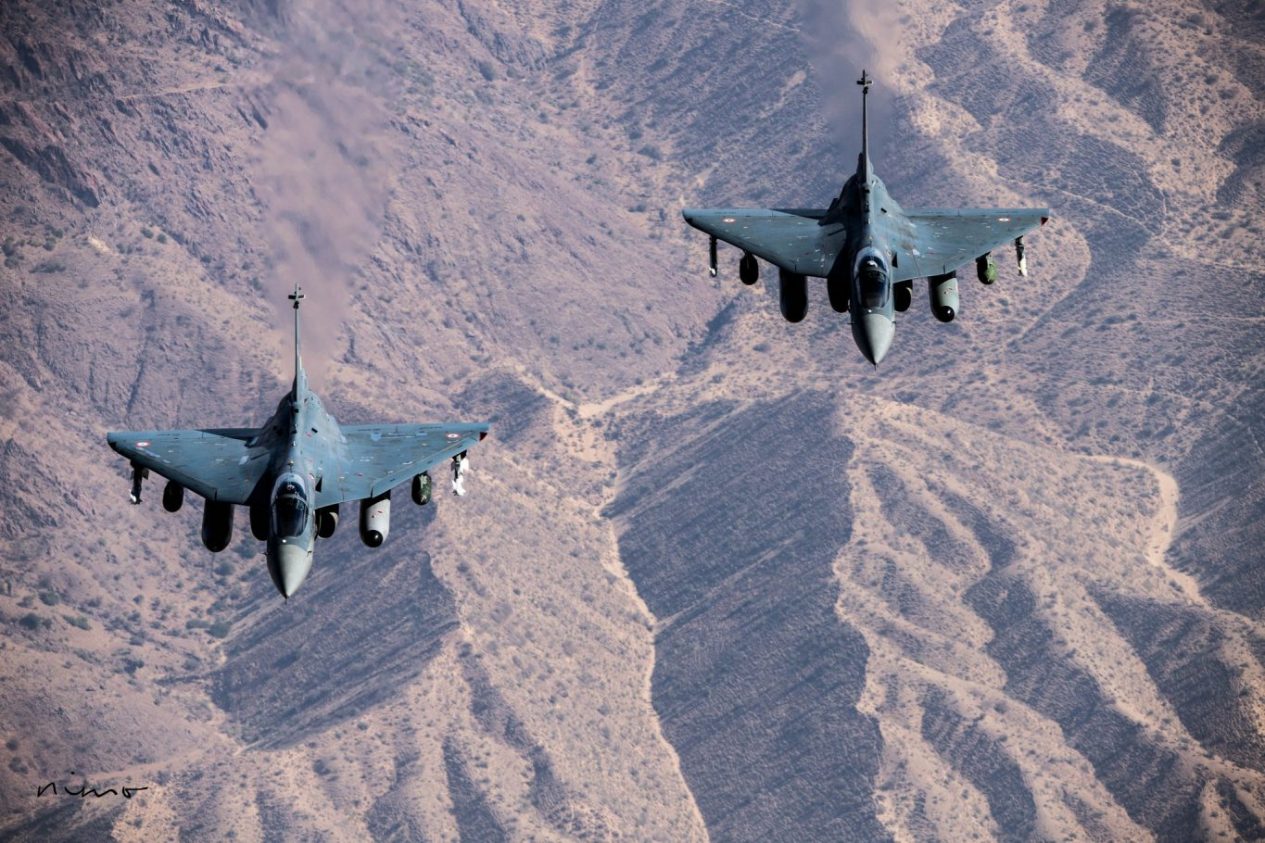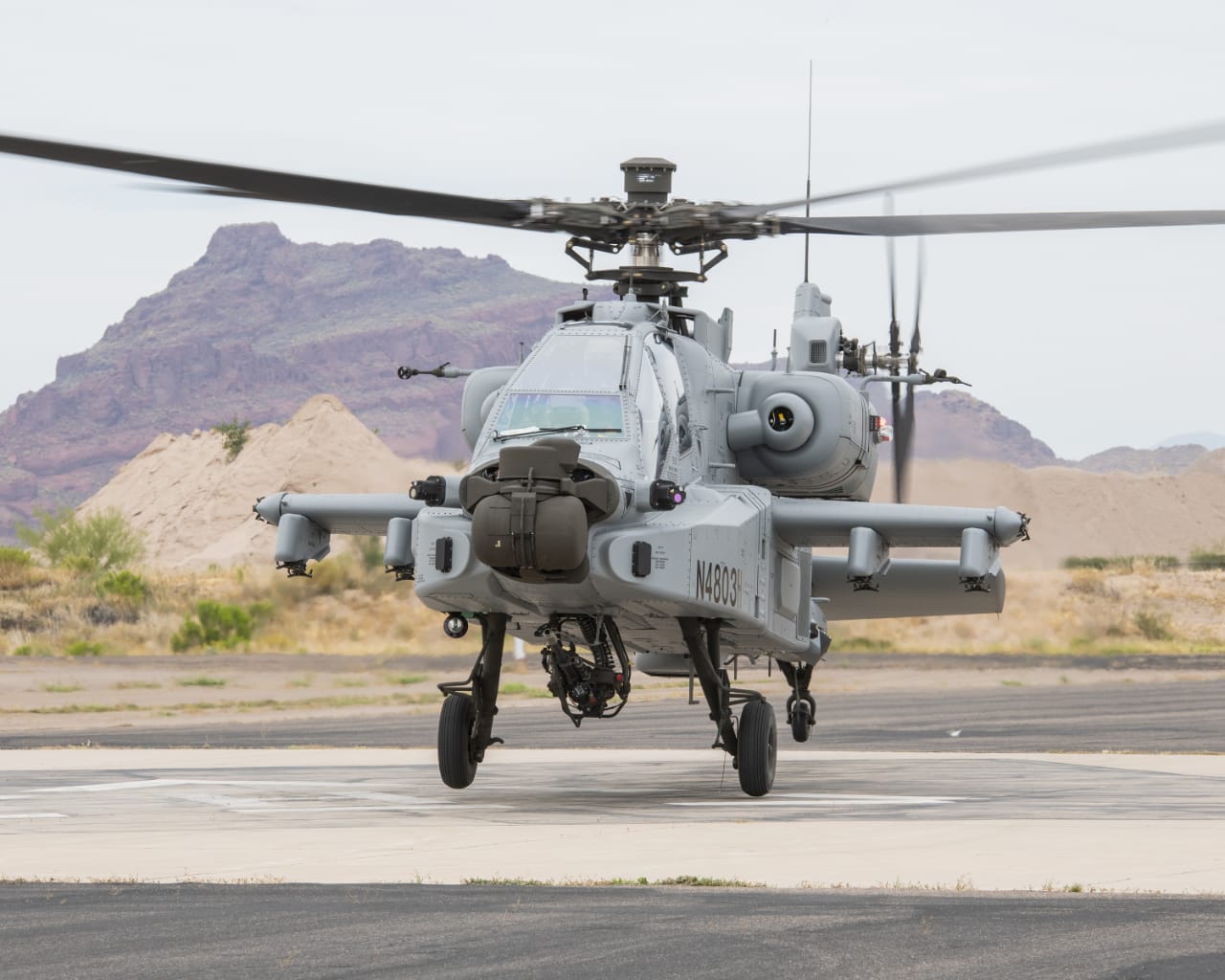The Indian Air Force (IAF) has begun preparing for, what it calls the largest war drills, scheduled to begin on March 5 in Pokhran in the north-western state of Rajasthan.
Pokhran, close to the Pakistan border, is also the place where India had conducted its nuclear tests — first in 1974, followed by another series of test explosions in 1998.
With the participation of nearly 100 fighter jets, the ‘Vayu Shakti’ exercise is aimed at showcasing the IAF’s offensive and defensive prowess in dealing with modern combat scenarios. It incorporates the capacity to perform in an electronically hostile domain and to execute detailed realistic simulations with network-centric combat methods.
The IAF has begun preparing for the exercise in the Chandan range. Many fighter jets are flying over Jaisalmer, honing their target-hitting skills, TOI reported. The Vayu Shakti exercise is held every three years.
IAF’s Rafales, Sukhoi Su-30MKI, Tejas KCA, Jaguar, Apache helicopters are likely to be among the 140 aircraft that will demonstrate their war-fighting capabilities.
This exercise will also feature woman pilots as well. They’ll apparently be flying MiG-21 Bison combat jets. Ten woman fighter pilots have confirmed their participation so far, with three more anticipated to join the exercise.
Nearly 137 aircraft took part in the 2019 edition, ranging from fighter jets like the Su-30MKI, MiG-29UPG, Jaguar, LCA, Tejas, and helicopters like the Mi-17, Mi-35, and others. Indian Air Force’s Garuda commando was also part of the drills.
Aside from the Rafale fighter plane, the AH-64E “Guardian” attack helicopter and the BrahMos Air Launched Cruise Missile (ALCM) are also expected to play a key role in the upcoming drills. The event, which is expected to draw dozens of diplomats and foreign dignitaries, also serves as an event to market and promote ‘Made in India’ military hardware.

President Ramnath Kovind, Prime Minister Narendra Modi, Defence Minister Rajnath Singh, the chiefs of the three services, and other dignitaries are scheduled to attend the IAF’s magnificent display of capability.
A Tool For Power Projection?
While the exercise allows effective assessment of operational readiness of the service, it is also aimed at projecting India’s airpower in the face of the twin threat from Pakistan and China.
In 2019, dozens of diplomats, notably foreign military attaches were taken to Pokhran aboard an IAF plane to witness this mega exercise. However, neither a Pakistani nor a Chinese diplomat attended the event.
Considering the nature of the relationship India has with these two countries, the mega exercise could send an indication of India’s operational readiness to prepare in any situation.
The 2019 exercise was held shortly after the terror attack in Pulwama in which 40 Indian security forces personnel lost their lives. Despite the fact that the exercise was planned weeks before the ghastly incident perpetrated by Pakistan-based Jaish-e-Mohammed, the security establishment saw it as a way of conveying a message to the neighboring country.
“While wars are few and far between, we have an ever-present sub-conventional threat as the enemy knows he cannot defeat us in a conventional conflict. So today we showcase our ability to punish, our ability to insert and extricate our troops from hostile territories,” said then-IAF chief BS Dhanoa while inaugurating the demonstration.

The capability of transporting troops was displayed in a spectacular manner, with Dhanoa arriving in a C-130 special forces plane that landed right in front of the crowd on a makeshift airstrip only 800 meters long. The C-130 is designed to drop commandos into hostile territory.
Following that, the Pokhran Ranges blazed with explosions as each of the Indian Air Force’s fighter planes hit a range of mock targets with pinpoint accuracy. The MiG-29UPG that has been modified to a multi-role aircraft demonstrated its new ground attack capability for the first time in 2019 exercise.
In the exercise, the IAF also demonstrated the capability of the indigenously-developed platforms like Light Combat Aircraft (LCA) Tejas, Advanced Light Helicopter (ALH) as well as the efficacy of Akash surface-to-air missile and Astra air-to-air missile.
A Tejas fighter launched missiles at a mock enemy aircraft and also hit a ground target. By night, the indigenous Akash missile intercepted and killed a simulated aircraft target.
- Contact the author at ashishmichel@gmail.com
- Follow EurAsian Times on Google News




